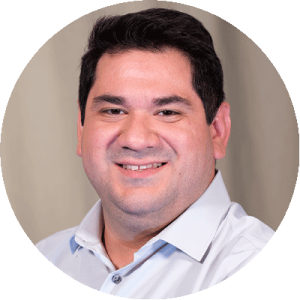Improving science education through news literacy
You won’t always see Kelly Melendez Loaiza’s students using beakers and Bunsen burners to demonstrate their grasp of the scientific method. That’s because this science teacher brings the rigors of evidence-based inquiry out of the lab and onto the laptop.
“Facts must be supported by reliable sources. They are not feelings or hunches,” Melendez Loaiza recently reminded students.
Since 2017, she has used the News Literacy Project’s Checkology® virtual classroom to help her students at Mansfield High School in Mansfield, Massachusetts, learn how to identify credible sources, determine the reliability of information and recognize biased, false or misleading content.
Not all information is equal
She said her students are often surprised by what they learn in Checkology’s “InfoZones” lesson, which explains that information typically falls into one of six primary purposes — to inform, to entertain, to provoke, to document, to persuade or to sell — and should be evaluated based on that primary purpose. “They never thought about information in that way, the different purposes. They saw it all as equal,” said Melendez Loaiza, who has been a teacher for 12 years.
She challenges students to ground their studies in solid evidence regardless of the topic or the class. For example, students in her Science and the Media class researched the pros and cons of alternative energy sources, while her chemistry classes examined the viability of nuclear power and wrote essays arguing both for and against it.
Sometimes, she said, her students get confused when evaluating sources: “The first thing they always want to know is ‘Can I believe this?’” She recalled one student who mistakenly believed that The New York Times was a “fake news” purveyor that could not be used as a source for class assignments.
‘Look for evidence’
To measure how her Science and the Media students would apply what they learned in the Checkology lesson “Arguments & Evidence,” she asked them to evaluate a video clip of President Donald Trump speaking about wind energy. “Try your best to put your personal bias aside. Be prepared to have your views change. Try to move beyond those feelings and look for evidence,” she advised the class.
In the clip, Trump tells the audience at a Republican Party fundraiser that the noise from wind turbines can cause cancer, and that home values plunge by 75% when wind turbines are erected nearby. After viewing the video, the students broke into groups to see what evidence they could find to support his statements. They examined news coverage and social media posts and stumbled across related jokes and satire.
The students concluded that Trump did not back up his statements with proof and noted that they could not find credible evidence to support the claims. One student pointed out that The Washington Post brushed over the president’s concern that wind turbines are deadly to birds — a statement that is grounded in credible research.
Melendez Loaiza encouraged them to go deeper: What is your evidence? How is the topic trending on social media? How is a source you trust reporting on it?
Critical thinking
Melendez Loaiza uses Checkology’s real-world examples to develop her students’ critical-thinking skills. “As a result of the work with Checkology, students feel more confident in their ability to find something that is reputable,” she said.
The platform also has benefited her as an educator. “It’s a really comprehensive tool. It’s empowered me to be a better teacher of the material,” she said.
Creating science-literate citizens is important to Melendez Loaiza, who concedes that the sheer volume of misinformation makes this work challenging. She also recognizes the broader implications of not being able to sort fact from fiction: “What does it mean as a society that we are having conversations that are not based on facts? And what is our responsibility as citizens?”
She then answers her own questions. “It’s our responsibility to teach this,” she said, referring to news literacy. “I don’t want to tell them what to think. I say, ‘You understand the science. Make up your own mind. Get the evidence.’”
Checkology helps her students to do just that.
Photo caption: Kelly Melendez Loaiza (center) in her Mansfield High School science classroom. Photo courtesy of Providence College.





